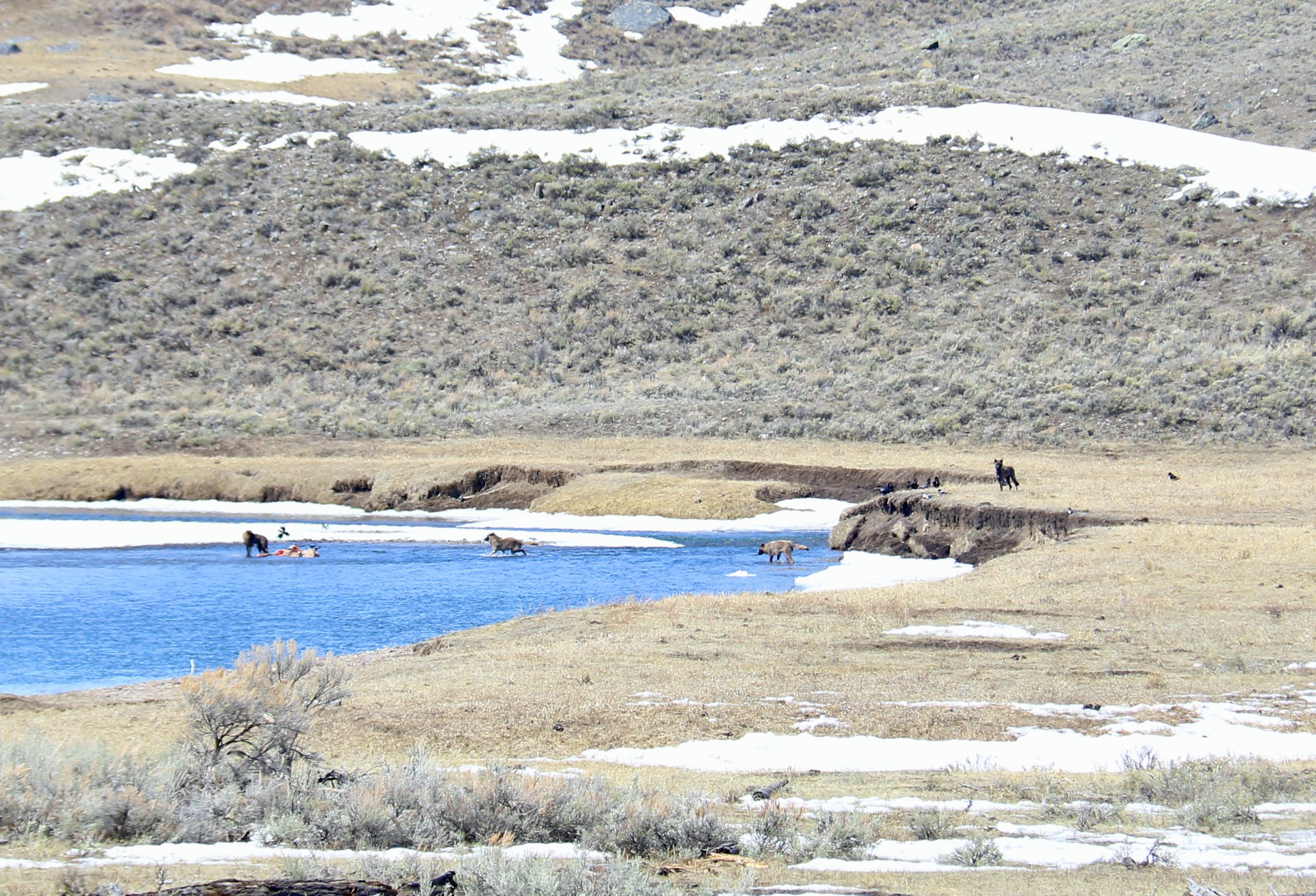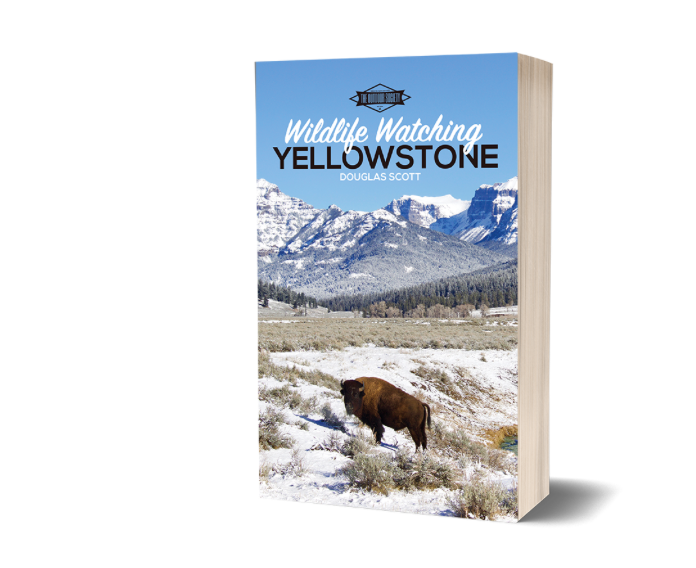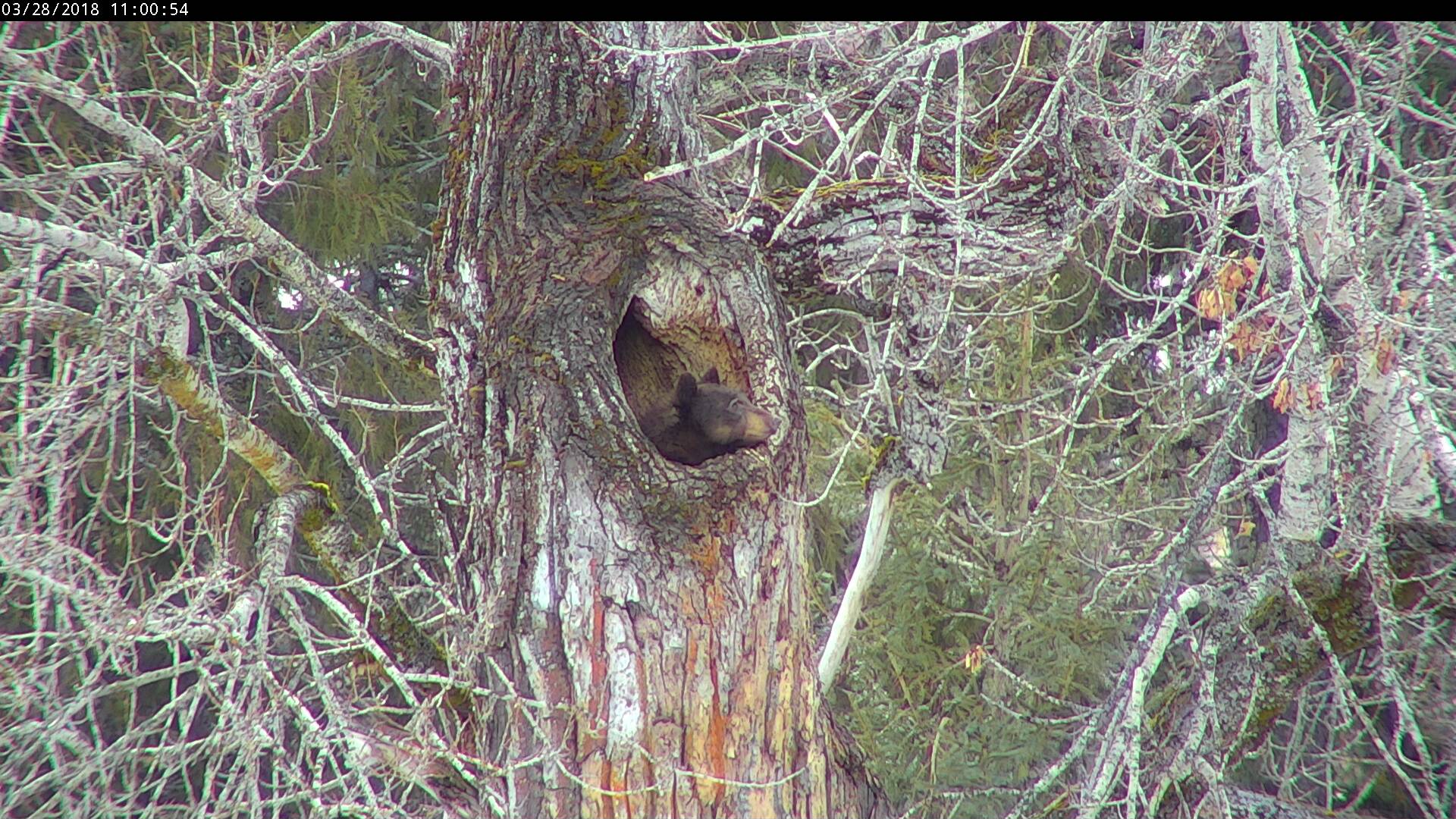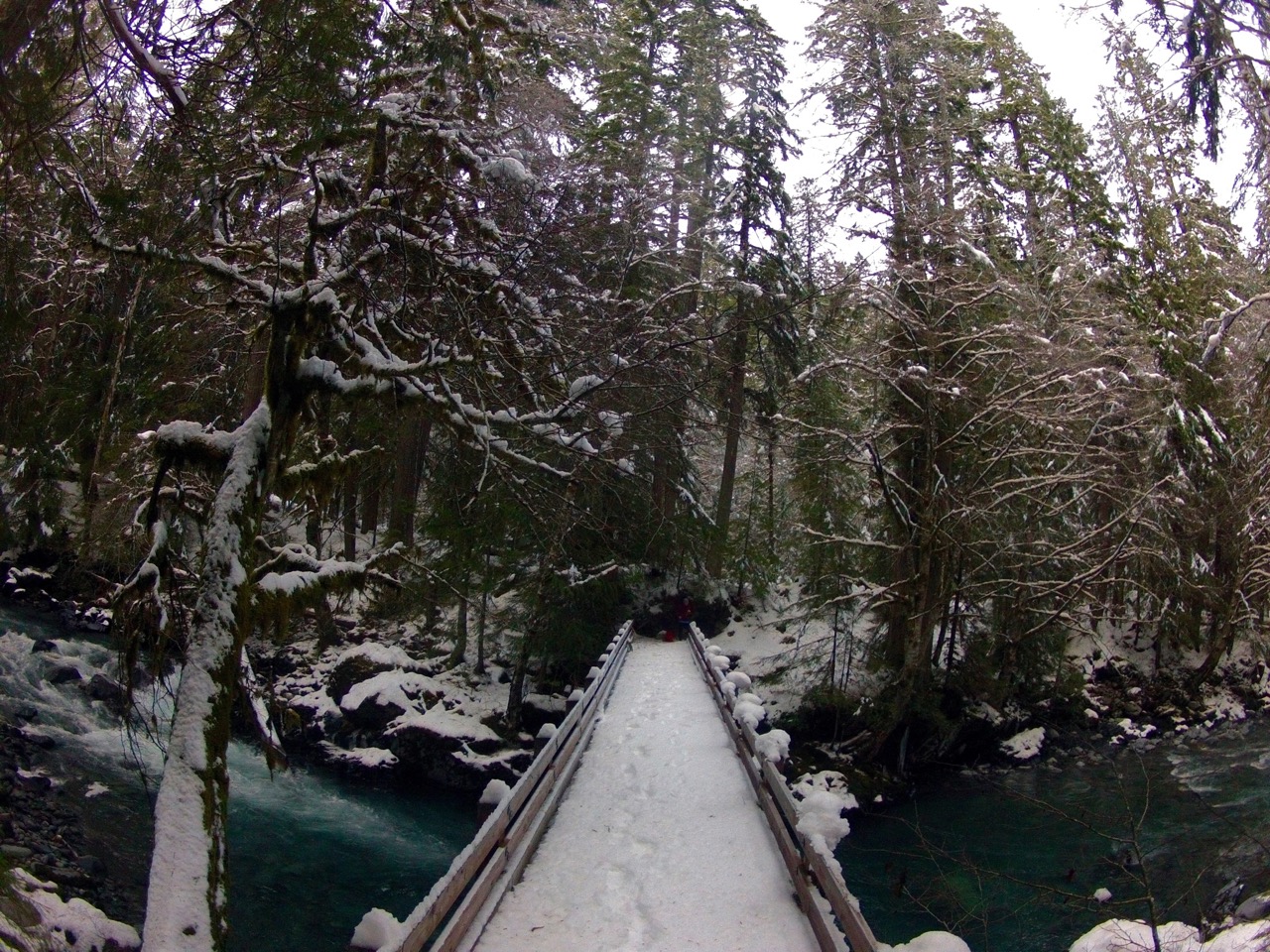We had hiked four miles or so miles down the closed road to the Slough Creek Campground and into the Slough Creek Valley. It was a late January day, with high temperatures barely scraping the freezing mark. The sun was out in full force, warming the prairie and the wildlife, but a light wind kept the incoming winter at the forefront of the mind. Little did we know that we would soon have a truly unique wildlife watching experience.
At the campground, we sat by the snow and ice that was building up and marveled at the gorgeous sight. We were out of the sun and in the shade, and within minutes of standing still, we grew a little cold. Bidding adieu to the slowly freezing waters, we decided to hike back along the river for a bit, soaking in as much of the winter wonderland as possible.
A few bison were scattered about, occasionally cresting a hill, spotting us and running away. We laughed at this and continued on, scanning the horizon in every direction for potential wildlife.
We were brought to a stop when two bald eagles flew overhead, battling for a chunk of meet one had in its massive talons. As they flew aaa from us, our eyes dropped to the river, where a handful of eagles and ravens had congregated. In the river was a dead elk, or what was left of it. Through binoculars, it looked like every small animal with teeth that ate meat and grabbed a piece or two if it.
Then, we heard a howl.
The howl that once you hear you immediately know is not a coyote.
Wolves were near.
The small pack of wolves were two hundred yards away, heading down a draw and through the sage toward the scattered remains of the elk in the river. As they grew nearer to the brilliant blue water, the ravens, eagles and magpies scattered, knowing their time to feast had come to an end. Now it was the wolves turn to dine. I was in awe of the moment, truly amazed at the scene unfolding before our small group of lucky hikers. We watched the wolves eat for about an hour before heading back to the car, beyond happy at the experience.
I snapped a few pictures, snapped a few more and we left. I wished I had a bigger lens with me. My pictures were fine, but those professional photographers, with $5,000 lens and $3,000 camera would have laughed at the images I took, especially when cropped close.
A little down on myself, I decided to look through the pictures I had taken as we hiked back on the road. Each image that I looked at made me smile. Each picture showed a gorgeous wildlife scene, showcasing how the animals worked with their surroundings to live and survive. Without realizing it, my lack of a huge lens captured something more natural and realistic. I had pictures that showed what it was like to wildlife watch from a distance in Yellowstone National Park.

There are two main camps in wildlife photography. Those who try to get their pictures as close to the animal with as much detail as possible and those who try to capture the entire scene of the day. Chances are, you are aware of at least one of them and it is probably the former. In recent years, with cheaper DSLR cameras and incredible lenses hitting the market, more and more people are flooding the photography marketplace with truly incredible images. If you go to any of their social media, you’ll find watermarked pictures of things like a bear from a half mile away, somehow capturing a drop of blood dripping from its tooth. Chances are, I was there that day too, but without the amazing setup they all rock, my pictures look much different.
The gap between amazingly powerful lenses and the camera setup I have and can afford is huge, so I started to do what I could to make my images unique among a landscape of close crops and zoomed in features. My images that I used in my 2022 calendar were zoomed back, removed enough to still see the wildlife in the foreground while giving you great views of the landscape with which the animals interact.
As always, if you are wildlife watching, KEEP YOUR DISTANCE! Do not get within 25 yards of deer, elk, bighorn sheep, mountain goats or other ungulates and small animals. Do not ever get within 100 yards of wolves and bears. Be a good steward of the land and help keep wild animals wild. Please familiarize yourself with the rules and regulations of wildlife watching in Yellowstone National Park.
SEE THE PARK’S WILDLIFE LIKE AN EXPERT
Purchase The Ultimate Wildlife Watching Guide for Yellowstone National Park to start planning your Yellowstone adventure and is sure to get you excited for all the wildlife viewing potential.




